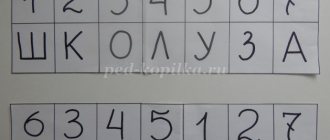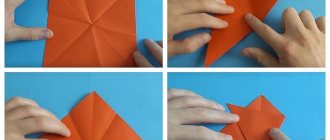- Essays
- Free theme
- Write a story about your work
Labor creates everything that a person uses. Labor is divided into several categories. Often, when people hear the word “labor,” they associate it with physical activity and hard work. But this is only one of the varieties.
With the help of labor, food is obtained and prepared, with the help of labor, clothes are sewn, and houses are built. Even labor includes the creation of paintings, compositions, and films.
Labor also includes training, raising and teaching children (educators and teachers), and treating people and animals. Self-improvement is work that, when achieving goals, benefits others. When a person masters a particular area, becomes an expert in it, he is able to help and benefit others.
Labor is divided into types. Activities are practical and spiritual. The practical one is built on production and social action. The spiritual one is built on knowledge, assessment and forecasts.
There is mental labor and physical labor. Mental work is more complex in nature; its implementation requires knowledge, skills and abilities. Physical labor is hard by nature and requires physical endurance and stability.
Creative work requires special talents and skills. Not every person is able to sing, draw, play roles and transform.
Labor is necessary for humanity. Without work it is impossible to achieve anything. Labor requires a lot of effort, time and energy. It is work that helps a person improve, be better, and reach new heights.
Someone always has to work. Some work, others rest. Then they change. Some cook, others sew clothes, others build houses, others defend the country, others teach children, and others heal people. If there was no work, who would do it? For others to feel good, someone has to work. Everyone does what they can, but everyone is needed by society.
Creative work can be called the creation of new objects. It could be a painting, a musical composition, a movie. Creative work is special. Has a direct bearing on culture. Responsible for aesthetics, something spiritual. Without creative work, life would be uninteresting, everything would be too full of routine.
so UNT / Lesson developments / Lessons on Understanding the World
Synopsis for the lesson on learning about the world “People’s work in autumn” 1st grade
12/14/2015 4237 0 Hertz Tatyana Aleksandrovna Purpose: Familiarization with the seasonal characteristics of people’s agricultural work.
Tasks:
1. Summarize children’s life observations about people’s work in the garden in the fall.
2. Continue to master the rules of safe work in the garden and vegetable garden, developing the skills to classify objects into groups according to essential characteristics.
3. Develop speech skills.
4.Teach to see beauty in human work.
5.Cultivate a desire to work and benefit others.
During the classes
1. Organizational moment. The long-awaited bell rang - the lesson begins. Every day - always, everywhere, During classes in the game, We speak boldly, clearly And sit quietly. 2. Updating knowledge. The loose snow melts in the sun, the wind plays in the branches, the voices of birds are louder. This means that... Answer (Spring) I don’t feel sorry for the warmth for you, I came from the south with the heat. It brought flowers, fishing, a ringing swarm of mosquitoes, strawberries in a box and swimming in the river. Answer (Summer)
The black nests are empty, the bushes have become smaller. The wind carries the leaves, It has arrived... Answer (Autumn)
Snow on the fields, Ice on the rivers, Blizzard is walking. When does this happen? (In winter) - Guys, how can we combine these words with two words? (Seasons) Well done! We started studying the “Nature” section. In the last lesson we already got acquainted with what time of year? (Happy autumn). Let's try to characterize it. What changes happen in the fall? How does the sun warm? Tell me, what's the weather like today? • Checking your homework, you had to write riddles about autumn. Whoever completed this task can read us several riddles. 3.Work on the topic of the lesson * Look at the pictures. What are people doing? What is this connected with? What kind of work do your parents do in the fall? What do they use to do this work? (tools, equipment) * choose exactly the equipment that we will need in the garden in the fall. - Guys, who can tell us the topic of our lesson today? (People's labor in autumn). Well done! 4. Physical education minute. In the garden, a scarecrow pulled his hat down, (imitate the movements of putting on a hat) He waves his sleeves, as if he were dancing. (movements with hands) This stuffed animal is placed there to guard, (they show how the stuffed animal stands) So that the birds don’t fly, so that the peas don’t peck. (imitate the flight of birds) 5. Primary consolidation. A) Work from the textbook pp. 48-49 (reading by the teacher). - Guys, what else did you learn interesting from the textbook? — what is the author of the poem Muzafar Alimbayev talking about? - Is it only in the garden that people harvest? — where do people put the harvest? B) Work in pairs. * make up a story based on the pictures. How grains and tomatoes are harvested. — Autumn is harvest time. What weather is needed to harvest without loss? 6. Game “Pantomime” - Do you help your parents in the garden or garden? Now we will find out. Use pantomime to show what exactly you and your parents are doing in the garden. (Children, if desired, come out and show actions, the rest of the students guess) 7. Rules for safe handling of gardening equipment. — When you helped your parents harvest, did you get hurt? — Do you know how to work safely in the garden? (children's answers) Work in groups (teacher shares).
Group 1: prepare a story about the dangers that await a person when he works in the garden.
Group 2: prepare a story about how to avoid accidents when working in the garden.
The teacher summarizes and clarifies the children’s answers.
8. Reflection on activity - What was the topic of our lesson? — Did we find out what kind of work people do in the fall in the garden, vegetable garden, field? — How should you work in the field, garden, vegetable garden? (carefully, conscientiously) -Do you like to work and help your parents?
- Let’s finish our lesson with the proverb “Labor makes a man, but laziness spoils him.”
Download material
so UNT / Lesson developments / Lessons on Understanding the World
Synopsis for the lesson on learning about the world “Human Work” 1st grade
10/07/2015 2483 468 Belotserkovets Gulnara Sharifovna Objectives: educational Show historical changes in human labor, improvement of the products of his labor Expand students' ideas about developing professions Development of horizons, attention, observation Formation of the following educational skills: ability to work with a book, work in a group, participate in a collective discussion; the ability to listen to comrades and enter into dialogue. educational To form a cognitive interest in working people and their professions To form an attitude towards work as an integral part of human life To cultivate a conscientious attitude towards work
1. The bell rang and stopped. Let's start our lesson. You turn to each other, you smile at each other. And now everyone sat down together, everyone looked at me. 2. Updating knowledge. Determining the topic of the lesson. To determine the topic of today's lesson, answer a few questions: - Tell us about this morning. How did you know it was time to get up? (children's answers) - Already in the first minute of awakening, we are faced with the world around us - with various objects and natural phenomena, people, objects made by man. — We got up and started getting dressed. What? Where did this come from? — We sat down to have breakfast. What did you eat? Where did this come from? - Who guessed what it would be about? (about human labor) PHYSICAL MINUTE 3. Repetition of what has been covered in previous lessons. (On the board there are words: tractor, hammer, nails; glass, window glass, sand; bread, cake, earth's surface) - Read the groups of words. Why are they so united? What is the connection between these items? (children's answers) - In order for a hammer and nails, bread and cake, glass and much more to appear, a person needs to work a lot. (2 students read by heart the poem “Themselves and Yourself” by V. Lunin, p. 28) - What is this poem about? (children's answers) 4. Work on the topic of the lesson. - Think and tell me why a person should work? —Has man always worked? a) Working with the textbook - On page 29, find proverbs about work. Who composed them? How did you know this? (independent reading, then children who read well read aloud) - What did you notice when you read? (2 groups) - Why is that? - Who is the worker and who is the worker? (Look at the illustrations for the proverbs. What can you say?) Work in groups. Read the proverbs and choose a proverb about work. PHYSICAL MINUTE 5. Continuation of work on the topic of the lesson. —Has human labor always been the same? — What about working tools? (presentation - slides 2-10 depicting ancient and ancient tools). Why did man invent more and more new tools and machines? - Look at the drawing on the spread. Tell me what you understand? — The products of human labor also changed. Look at the pictures of some objects. What do you think? (slides 11-17 showing a tower, a modern building, a kerosene lamp, a KVN TV, a gramophone and a gramophone) 5. Conversation about the work of parents. Children's stories. 6. Presentation “Professions” 1 – Which of these people monitors compliance with traffic rules and will help a child and an adult if necessary? Tell us briefly about other professions. — What professions do you think are hidden behind the curtains? (slides 18-19) 2 - behind the blue one - Give this food: Poultry, dried fruits, Rice, potatoes... And then delicious food awaits us. (cook) - for the yellow one - Give me scissors, a comb, He will do your hair. And, of course, he will certainly cut your hair in a modern way. - behind the green - Securing the border is important! And they call him there. With a faithful dog, they bravely serve their Motherland. - behind the pink one - If suddenly something bad happens, Something catches fire somewhere He will go there urgently And put it out - that’s for sure.
—What do you think is the most important profession? Conclusion: all professions are important. 7. Reflection. Show the emoticon that matches your mood. If you learned something new, raise a yellow smiley; if you learned nothing new, raise a green one. If it was not interesting - red.
See the downloadable file for the full text of the material.
The page contains only a fragment of the material.




